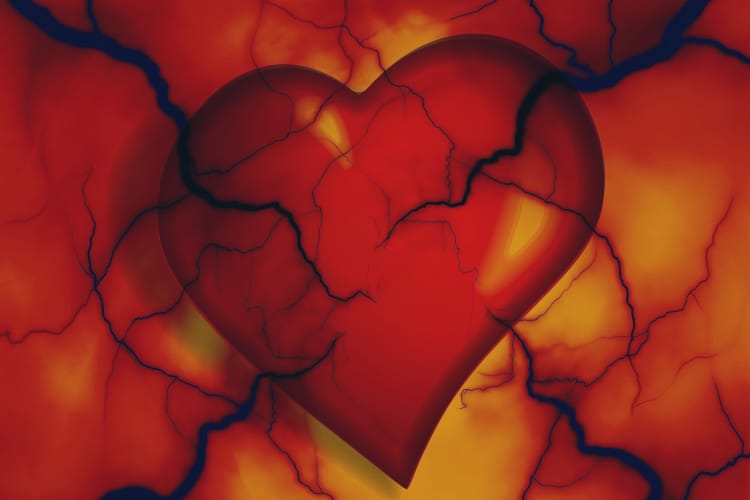
Symptoms and Treatment of Congestive Heart Failure
Table of Contents
What is heart failure and how to come back from it
The heart is what makes your entire body function. Without the proper amount of blood circulation your muscles won’t move, your lungs won’t expand, and your brain cannot function. When it comes to congestive heart failure or CHF, the heart starts to pump weaker. It’s easy to believe from the name that CHF means the heart just outright stops working, but that’s not true. Congestive heart failure is actually a progressive condition where the heart isn’t pumping as efficiently as it should. This lowers circulation and allows blood to build up, heightening blood pressure and stretching the heart. This weakens the heart even further and can be lethal.
What are the common types of CHF?
The most common form of CHF is left-sided CHF. This happens when the left ventricle of the heart stops pumping enough blood. As this weakens your heart and body the fluids that aren’t circulating can build up in your lungs making it hard to breathe or around the heart making the condition worse and stretching your heart muscles.
Within this category, there are two different variations of CHF, systolic and diastolic heart failure. The difference here is how the ventricle is failing. During systolic heart failure, the left ventricle doesn’t contract as it should which reduces the power of each heartbeat. However, diastolic heart failure is when the muscle in the left ventricle stiffens, this means that the heart can’t fill with as much blood between beats.
There is a right-sided version of CHF and this is when the right ventricle of your heart has trouble circulating blood into your lungs, lower limbs, abdomen, and major organs. It is possible to have both at once, however, CHF normally starts on the right side and then begins to affect the left as the disease progresses.
Stages and symptoms
There are four stages to CHF with varied symptoms and treatment options. In its earliest stage, often referred to as ‘Class I’ there aren’t any symptoms during typical physical activity. This is the best time to catch the disease as here it can be treated with lifestyle changes, heart medication, and regular monitoring. Once Class II has begun, normal activity may cause fatigue, irregular heartbeat, and shortness of breath. At this point, CHF can still be managed with lifestyle changes and heart medications but calls for closer monitoring.
Class III symptoms come with a more significant limitation to physical activity and even mild exercise can mean fatigue, chest discomfort, heart palpitations and shortness of breath. Treatment here becomes more complicated and must be managed on a case by case basis. By the time Class IV is reached, there can be little to no physical activity without significant discomfort. At this stage there are many quality-of-life care options however there is no cure for fourth stage CHF yet.
How you can lower your risk and treat your symptoms
When it comes to congestive heart failure prevention, there are many healthy life choices you can make to preserve heart health. First and foremost look at your drug and alcohol consumption. Things as common as smoking can be a major risk factor for your lungs and heart. Next is commonly known, diet and exercise. Be sure to limit trans fats, sugar, and sodium and eat a lot of lean proteins. These are things like a chicken without skin, olive oil, fish, and avocado. Another great way to preserve heart health is to manage your weight. Regular exercise and physical activity keep your circulation strong and your muscles, including the heart, nice and strong.
On top of diet and exercise, there are many small changes you can make to ease the daily demand on your heart. Compression socks can activate your leg muscles and improve lower limb circulation, this is incredibly important, especially when most of your day is spent sitting at a desk or standing still. The calves are known as the “second heart” of the body, and gradual compression socks. Common relaxation and self-care practices can also reduce anxiety and stress on the heart. Things like hot baths, aromatherapy, regular massages, and meditation can lower your stress and keep your heart healthy and strong. If you are at risk or have noticed some symptoms, schedule an appointment with your family doctor. Your doctor will probably refer you to a specialist. From there if you do need treatment be sure to do your research. Check reviews! A simple search like “vascular surgeon houston” or “heart doctor” will show you all of your options.
Conclusion
Congestive heart failure is a life-threatening condition. Taking measures early in life to prevent it and catching it early in its progression can make all the difference. Dietary changes like incorporating fresh vegetables and fruits into your daily menu along with lean proteins while avoiding high sugar and sodium levels can be a huge help to your body and mind. Furthermore, regular activity along with stress relief can add strength to your heart and years to your life. Finally, using circulation promoting tools like compression socks can support your heart in its efforts and keep your body functioning at its best even when you’re stuck at a desk or simply resting.






